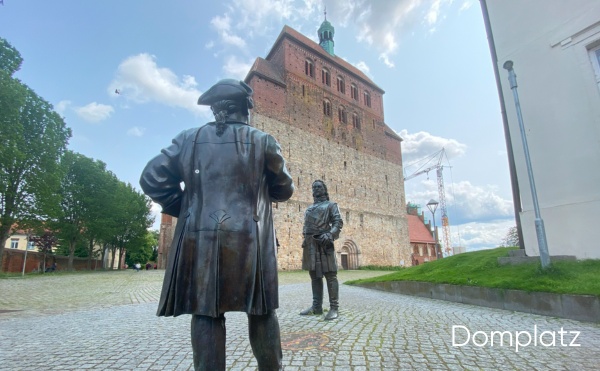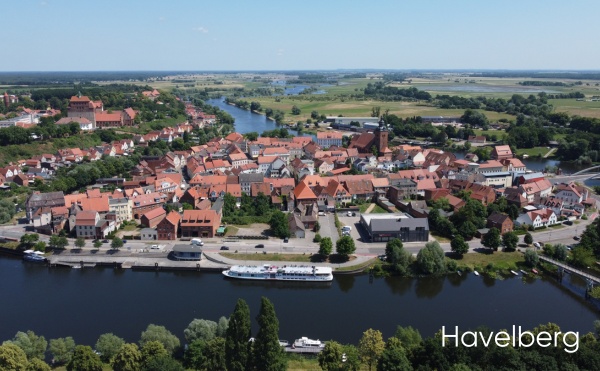Havelberg and Russia: alliance of 1716 brought great benefits to both countries
Anyone strolling through the tranquil streets of Havelberg today might not suspect that over 300 years ago, a piece of European history unfolded here that still resonates today.
Connection between Havelberg and Russia
The connection between Havelberg and Russia is a fascinating chapter filled with great monarchs, political alliances, legendary exchanges, and local anecdotes. This article takes you on a journey back to the early 18th century—and shows how Havelberg became the scene of world political events.
The Great Northern War and the Meeting of the Powerful
To understand the significance of Havelberg in the history of Russia and Prussia, it is worth looking at the Great Northern War (1700–1721). In this conflict, numerous European powers, including Russia and Prussia, fought against the then-mighty Sweden for supremacy in the Baltic region.
Tsar Peter I, better known as Peter the Great, aimed to make Russia a major European power and secure access to the Baltic Sea. Frederick William I of Prussia, the “Soldier King”, was seeking allies to consolidate his power and strengthen the Prussian army.
In November 1716, Havelberg became the scene of a historic meeting
Tsar Peter the Great traveled with a large entourage to consult with Frederick William I. The meeting took place in the provost’s residence below Havelberg Cathedral—a place that still exudes a special aura today. The city was in a state of emergency for days: the Russian court, Prussian officers, diplomats, and numerous onlookers turned Havelberg into an international meeting point.

The provost’s residence is no longer a flagship of the city today. However, the cathedral, gardens, playgrounds, and restaurants around it are wonderful places to stay.
A legendary exchange:
The Amber Room and the “Lange Kerls”
The 1716 meeting is especially remembered for a legendary exchange of gifts. Frederick William I presented the Tsar with the famous Amber Room—a masterpiece of amber, gold, and mirrors originally created for the Berlin City Palace.
Peter the Great was so impressed by the artwork that he wanted it for his new palace in St. Petersburg. The Prussian king was generous and gifted the Amber Room to the Tsar.

Amber Room Havelberg ➡️ Russia ∙ Photo of the replica created from 1976 onwards. The original has been missing since 1945. Florstein, Wikimedia Commons, CC BY-SA 4.0
But what did Prussia receive in return?
Tsar Peter reciprocated with a gift perfectly suited to the “Soldier King”: 200 Russian grenadiers, known as the “Lange Kerls,” to reinforce the famous Prussian Guard regiment. These soldiers had to be at least 1.88 meters tall—an imposing sight at a time when the average man was much shorter. The “Lange Kerls” were treated almost like exotic celebrities in Prussia and were a prestige object for the king.

Schwerid Rediwanoff from Moscow ➡️ 1 of 200 “Lange Kerls” who came to Prussia ∙ Image Wikimedia Commons, public domain
This exchange—Amber Room for “Lange Kerls”—remains present in Havelberg to this day. Since 2015, two life-size bronze figures depicting Tsar Peter and Frederick William I in conversation have stood on Cathedral Square. Between them is a round plaque reminiscent of the Amber Room. The sculptures are a popular photo spot and a living symbol of the connection between Havelberg and Russia.

Frederick William I of Prussia in the foreground with a view of Havelberg Cathedral and Tsar Peter I of Russia. The figures are meant to be life-size, so you can stand next to them for a photo. Who is taller?
In the year of the 2015 Federal Garden Show, you could buy a postcard for 2 euros by inserting the coin at chest height into the figure. Unfortunately, this mechanism no longer works today. However, Havelberg children are occasionally happy to find coins in the return slot.
Havelberg postcards can be found on the old town island at the post office or Fritz Kühn.
Anecdotes, Legends, and Local Stories
Numerous anecdotes surround the Tsar’s visit, still told in Havelberg today. For example, Peter the Great, known for his curiosity and love of craftsmanship, is said to have not only visited the shipyard in Havelberg but even personally worked on a figurehead for a ship. Whether this mermaid was actually carved by Tsar Peter is not historically proven—but the story is gladly told and reflects the respect the people of Havelberg had for their Russian guest.

The mermaid, which according to legend was carved by the future Tsar Peter the Great, disappeared in 1945. A replica now hangs in the same place at Havelstraße 44. For several years, high-quality holiday apartments have been offered in this building.
Another anecdote tells how the mayor’s wife apologized for being able to serve the Tsar only fish. Peter, a friend of simple food, is said to have praised the Havelberg fish soup and had several helpings. Such stories show how great world events and local life intersected in Havelberg.
The Russian court also left a lasting impression in Havelberg. Contemporary reports describe the splendid uniforms, exotic customs, and exuberant feasts, which were not always conducted with restraint. It is said that conversations between the Tsar and the King sometimes stalled because the wine was too good and the mood too lively.
The “Convention of Havelberg”: An Alliance with Consequences
The 1716 meeting was not only a social event but also had far-reaching political consequences. In the so-called “Convention of Havelberg,” Prussia and Russia sealed their alliance against Sweden. This agreement was renewed in 1718 and contributed to Sweden losing its dominance in the Baltic region. For Russia, it meant the rise to a European great power—a goal Peter the Great pursued with determination.
Havelberg thus became a symbol of 18th-century European diplomacy. The city was not only a witness but an active participant in a political process that permanently changed the map of Europe. The alliance between Prussia and Russia lasted for many decades and shaped the history of both countries.
Remembrance and the Present: Havelberg as a Place of Encounter
The connection between Havelberg and Russia is still alive today in the cityscape and collective memory. The bronze statues on Cathedral Square commemorate the meeting of the monarchs and are a symbol of the city’s self-confidence, which proudly looks back on its history. The local heritage association and historians also keep the memory of this extraordinary episode alive.

Today’s Hanseatic city of Havelberg is also a popular destination. You can discover history at the Prignitz Museum at the cathedral and nature at the House of Rivers. Or simply enjoy the combination of nature and tranquility in a small-town setting.
For visitors, Havelberg offers the opportunity to walk in the footsteps of Tsar Peter and Frederick William I. The cathedral, the old town, Cathedral Square with its sculptures, and the herb and flower garden are worthwhile destinations for anyone interested in history and European culture.
Tip for Visitors
Anyone visiting Havelberg should take time to enjoy the atmosphere on Cathedral Square, listen to the stories of the city guides, and perhaps think of the legendary encounters of 1716 over a bowl of fish soup in one of the restaurants.
Question for us Havelbergers:
In which restaurant can you still get fish soup?
Retrospective: The history of Havelberg and Russia is a fascinating example of how a small town can become the scene of great politics. It shows how diplomacy, personal encounters, and local stories interact—and how these connections still shape the image of a city today.
Sources
- Caspar, Helmut: “Amber Room for Lange Kerls,” Berliner Zeitung, 2016
- Wikipedia: Amber Room
- Wikipedia: Havelberg
- Volksstimme: “Tsar Peter meets the King of Prussia at the Cathedral,” 2016
- Havelberg Heritage Association: “United in the Fight against Sweden”
- Volksstimme: “The Tsar – Legend and Truth,” 2015
- Prussian History Online: “Convention of Havelberg”


Leave a Reply